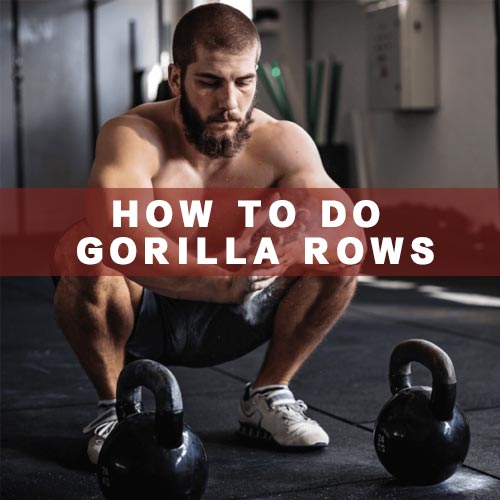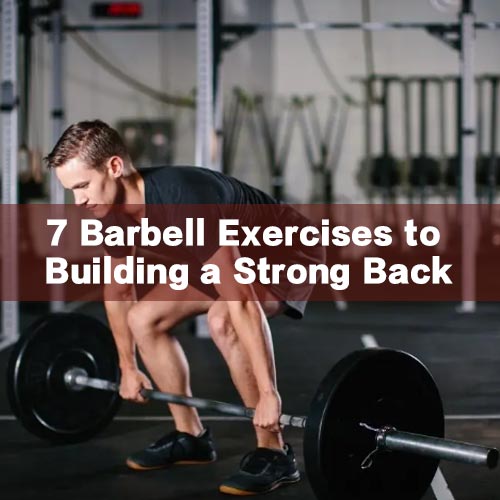As a woman, having strong, sculpted legs is about way more than just aesthetics. Powerful legs make every aspect of life easier—from carrying groceries to climbing stairs, playing with your kids, hiking, and beyond.
Unfortunately, many women skip leg day or neglect lower body training altogether. All too often, you see women solely focused on workouts for a big butt or toned arms while letting their leg development fall by the wayside.
Leg Workouts with Dumbbells
Well, it's time to change that mindset! The best part? You only need one dumbbell to complete the entire workout. Let's start!
Equipment and preparation
For leg training, all you need is a dumbbell. Choose a weight that challenges you but allows you to maintain proper shape throughout your workout. IFAST Quick Lock Adjustable Dumbbells have just the thing for you! Plus, it ensures you have a comfortable space to exercise and plenty of room to move around.
If you want to know more about our new dumbbell, please click👉 IFAST Dumbbell
Leg Day Workout Routine for Women
1.Goblet Squats

Goblet squats with a single dumbbell are a fantastic lower body exercise. This variation adds an extra challenge and requires stability and control. Here's a step-by-step guide on how to perform goblet squats with one dumbbell:
- Begin by holding a dumbbell vertically with both hands, cupping the head of the dumbbell with your palms. Bring the dumbbell close to your chest, with your elbows pointing downward.
- Stand with your feet slightly wider than shoulder-width apart, toes pointing slightly outward.
- Engage your core, keep your back straight, and maintain a neutral spine throughout the movement.
- Initiate the squat by bending at the knees and hips, lowering your body down towards the ground. Imagine sitting back into an imaginary chair.
- Lower your body until your thighs are parallel to the ground or as low as your flexibility allows. Ensure that your knees stay in line with your toes, without collapsing inward.
- Pause briefly in the lowered position, then push through your heels to extend your legs and return to the starting position. Simultaneously, keep the dumbbell close to your chest throughout the movement.
2.Sumo Squat

- Performing sumo squats with a single dumbbell adds an extra challenge and requires additional stability and control.
- Stand with your feet wider than shoulder-width apart, toes pointing outward at a 45-degree angle. Hold a dumbbell with both hands, gripping it vertically in front of your body, with your palms facing upward.
- Engage your core, keep your back straight, and maintain a neutral spine throughout the movement.
- Initiate the squat by bending at the knees and hips, lowering your body down towards the ground. As you descend, allow the dumbbell to hang straight down between your legs.
- Lower your body until your thighs are parallel to the ground or as low as your flexibility allows. Ensure that your knees stay in line with your toes, without collapsing inward.
3.Romanian Deadlift

- First, hold a dumbbell with both hands, overhand (palms facing your body), and hang it in front of your thighs. Stand with your feet hip-width apart and your knees slightly bent.
- Engage your core, keep your back straight, and maintain a neutral spine throughout the movement.
- Initiate the movement by hinging at your hips, pushing your glutes back while maintaining a slight bend in your knees. Allow the dumbbell to move closer to your body as you lower it down.
- Lower the dumbbell towards the ground while keeping your back straight and your chest lifted. Focus on feeling the stretch in your hamstrings as you descend.
- Continue lowering the dumbbell until you feel a stretch in your hamstrings or until your torso is parallel to the ground. Avoid rounding your back or letting the dumbbell pull you forward.
4.Wide Stance Lunge

- Start by standing with your feet wider than shoulder-width apart. Point your toes slightly outward to maintain a comfortable and stable position, holding a dumbbell in one hand.
- Keep your core engaged and maintain an upright position with your chest lifted throughout the exercise.
- Take a large step forward with your right foot, making sure your right knee is directly over your ankle. Your left foot should remain in a resting position.
- Bend both knees at the same time and lower your body so the dumbbells are close to the floor. The goal is to lower your hips until your right thigh is parallel to the floor or as low as flexibility allows. Keep your weight evenly distributed between your legs.
- As you lower your body, engage the quads, hamstrings, and glutes of your front leg to control the movement. Your back leg should also be bent at the knee, but most of the weight should be on your front leg.
- Push through your right heel to return to the starting position. Extend your right leg and return your right foot to a wide stance.
Perform 3-4 sets of 8-12 reps per exercise. You can repeat this exercise weekly, increasing the difficulty by adding weight or reps.
Tips for Maximum Dumbbell Leg Gains
As you progress through dumbbell leg training, be sure to apply these proven tactics to continue growing your strength and muscle over time:
Increase Weight in Small Increments
Your body can only handle so much external load in one jump. Progressively build up by adding 2-5 lbs to your lifts over time.
Switch Up Stances and Foot Positions
Small tweaks to your stance, foot flare, slightly different exercise angles, etc. provide built-in progressive overload for your leg muscles.
Adjust Tempos and Pause Reps
Slowing down the eccentric (negative) portion while pausing at the bottom intensifies the time under tension, triggering more growth.
Incorporate Unilateral Exercises
Single-leg or offset-loaded moves fix imbalances and increase the training stimulus compared to bilateral exercises.
Don't Forget Isolation Work
While compound exercises should make up the bulk of your workouts, throwing in some targeted moves for hamstrings, glutes, etc. boosts overall leg development.
Emphasize Muscle Minding
Maintain a mind-muscle connection by squeezing and contracting your leg muscles as hard as possible on every rep.
Stay Consistent
Results won't happen overnight. Trust in consistent, intelligent dumbbell leg training over months and years for ultimate lower body transformation.
Let's be honest—leg days are tough, especially when you're new to dumbbell training. But pushing through those inevitable challenges and growing your mental and physical fortitude is exactly what leads to stronger, more powerful legs.
Heavy weights, high reps, and endless variety are the perfect formula for lower body gains using dumbbells. Stick with it and see your stems go from to shapely to straight-up stubborn!
Bodyweight Leg Workout
No need for any weights, machines or equipment - this tough bodyweight workout will exhaust your quads, hamstrings, glutes and calves from every angle! Increase difficulty by adding reps, sets or slowing down tempos.
Bodyweight Squats - 4 sets of 20 reps

Stand with feet shoulder-width apart, and send hips back and down until thighs are parallel to the ground. Push through heels to return to start.
Lunges - 3 sets of 15 reps per leg

Glute Bridges - 3 sets of 15 reps

Lie on the back with knees bent and feet flat. Push through heels to raise hips until the body forms a straight line. Squeeze glutes at the top.
Step-Ups - 3 sets of 12 reps per leg

Use a bench, chair, or sturdy box. Step up leading with one leg, bringing the other leg up to meet it. Step back down under control.
Wall Sit - 3 sets of 45 seconds

Lean back against a wall with feet out and thighs parallel to the ground. Hold this isometric squat position.
Jump Squats - 3 sets of 10 reps

From the bottom squat position, push through heels to explode up, straightening legs fully. Land softly and repeat.
Calf Raises - 4 sets of 20 reps

Stand tall, and raise your toes while squeezing your calf muscles at the top. Slowly lower back down under control.
Benefits of Leg Day Workouts for Women
Enhanced Lower Body Strength: A dedicated leg day routine helps build strength in the quadriceps, hamstrings, glutes, and calves, allowing you to perform daily activities and sports more efficiently.
Improved Functional Fitness: Strong legs contribute to better balance, stability, and mobility, reducing the risk of falls and injuries.
Boosted Metabolism: Leg workouts engage large muscle groups, leading to increased calorie burn and improved metabolism.
Shapely Legs: Regular leg training can help tone and shape your legs, giving you the confidence to rock those shorts or skirts.
Conclusion
A leg day workout is a crucial part of any well-rounded fitness routine, providing numerous benefits for women. With just a single dumbbell and dedication, you can effectively target and strengthen your leg muscles. Incorporate this leg day routine into your weekly schedule, gradually increasing the intensity as you progress. Remember to prioritize proper form, rest, and recovery to optimize your results. By committing to regular leg training, you'll be well on your way to building strong, toned, and confident legs that support your overall fitness and well-being.
FAQs
How often should women do leg workouts?
The frequency of leg workouts can vary depending on individual goals, fitness level, and overall training program. As a general guideline, women can aim to include leg workouts 2 to 3 times per week, with at least one day of rest in between to allow for proper recovery.
Should women focus on high reps or heavy weights for leg workouts?
Women can benefit from a combination of both high reps and heavy weights in their leg workouts. Higher rep ranges (8-15 reps) can help improve muscular endurance and definition, while heavier weights (4-8 reps) can promote strength and muscle growth. It's important to vary the rep ranges and weights over time to continually challenge the muscles and avoid plateaus.
Should women include cardio in their leg day workouts?
Including cardio in leg day workouts is a personal choice. Cardiovascular exercises such as running, cycling, or using the elliptical machine can be done before or after the strength training portion of the leg workout. It can help improve overall cardiovascular fitness and aid in burning additional calories. However, if the primary goal is strength or muscle building, it's important to prioritize the resistance training exercises and adjust the cardio accordingly.
Can women incorporate bodyweight exercises into their leg workouts?
Absolutely! Bodyweight exercises can be a valuable addition to leg workouts for women. Exercises such as bodyweight squats, lunges, step-ups, and glute bridges can effectively target the lower body muscles and provide a challenging workout. Bodyweight exercises can be especially beneficial for beginners or when access to weights or equipment is limited.
Should women stretch before or after leg workouts?
It's generally recommended to perform dynamic stretching and a light warm-up before leg workouts to prepare the muscles for exercise. This can include movements like leg swings, hip circles, or walking lunges. After the workout, static stretching can be beneficial to improve flexibility and promote muscle recovery. However, it's important to stretch within a comfortable range of motion and avoid forcing any stretches that cause pain or discomfort.


